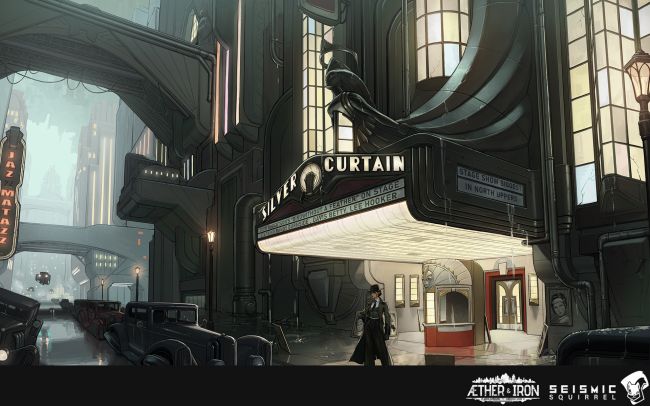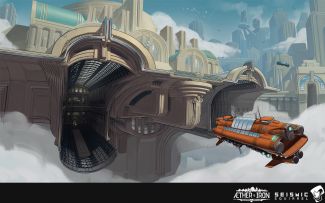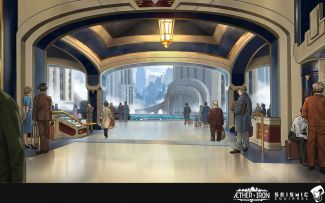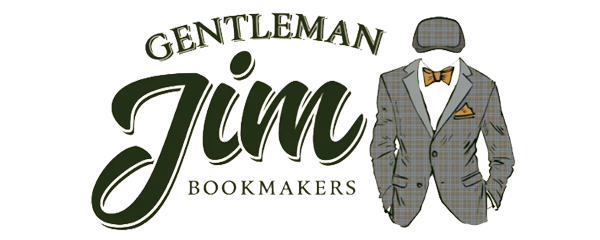It was an overcast afternoon in June. The sun hid behind the towers where my dilapidated apartment building stood in shadow. For some it is the end of the work day, for others the beginning. My eyes tire of staring at screens, my fingers automatically prepare to type. I open the meeting, camera on, unsure if the developers are ready for the pale shock they are about to experience when they see my face. They are frozen. Fear? Excitement? I quickly find the answer when someone says, “Teams doesn’t work for me, can we try Discord?”
Thanks for admitting to that little noir escapade above. I felt it just had to happen after glancing at Aether & Iron, an RPG that asks if New York in the 1930s really deserved some romance. With an engaging art style and a nice mix of narrative decision-making, point-and-click elements, along with turn-based chases, Aether & Iron caught my interest during the brief preview, prompting me to ask as many questions as I could to Narrative Lead Tyler Whitney and Product Manager Joshua Enz. Below is the interview, which has been edited for length and clarity:
Q: What can you tell me about the world of Aether & Iron ?
Whitney: “We really like the aesthetic of the 1930s. But when we were talking about, okay, tactical play, role-playing in the 1930s, a lot of the things we wanted to do were already done. And we’re like, okay, how can we take it to the next level? And the question really became what direction do we go in to change it. And we came up with the idea of, what if the New York of the 1930s, but in the sky? And to create this deco-punk world where the discovery of, or rather, the harvesting of ether…. What if humanity were able to harvest it and use it? So New York City, instead of stretching out, stretched out. Corporate cities were very large in those days, where you have a wealthy individual, or an individual driven by a religion, or philosophy, or concept, or government, or type, or political ideology. And what if those individuals were essentially given their own island? And New York City now consists of all these competing individuals and their own idea of a better world. And so that gave us the background. And Josh talked a little bit more about the variety that we have. And the key elements here are that we really pulled from history in developing these different biomes, shall we say.”
Whitney (continued): “You have a broken New York. They’re each self-determined. They do what they do what they want to do. No one comes in and says, you have to be dry, or you have to do X, Y and Z. Each of them has their own codes and laws and such, which is the perfect opportunity for you, the main character, Gia, Giovanna Rendazzo, to be a smuggler. Smugglers are historically, socially, acted as a person in between. They live in the gray areas of society. They bring you what you need. And in a New York City that consists of all these neighborhoods, each with their own laws, restrictions and permissions, it’s a good thing to be a bootlegger, because you might have a vice island where we require you to drink two drinks a day, right next to an island where it’s like you don’t drink at all, And you can make good money with that. And so when we drop the player into that kind of very large world, an important element is to figure out how to make the most of these particular sets of cultural rules and environments to play through the world.”
Q: Why did you go for the 1930s and bring this verticality to the world? And how does that verticality translate into the gameplay?
Whitney: “I think I’m a terrible romantic. And so you took the 1930s as sort of the most romantic version of it, of all these new ideas came about. It was a time of great social change. It was a time when architects were expressing themselves in new ways to create these fantastic structures and cities. And then visually, I’m just kind of taken by it, to be very honest. Cars are cool. The buildings are cool. They’re just fun to look at. I think when we go into the verticality element of what you just asked, how it plays a role, is that when we were building it, a lot of the research in the beginning actually dove way too far into sociological and psychological research on how skyscrapers affect people. And when you’re stuck there for a long time, it changes the way you look at the world. And I was like, that’s just a fascinating idea. Obviously, there’s an internal compelling force that tells people that we want to go up. And what if we surrendered to that? What kind of world could we build out of it? And we kept asking these questions.”
Q: Gia is our main character, but she is also our narrator. What was the decision-making process behind this and is she a reliable narrator?
Whitney: “I think this goes back to our vision for this game to be something that fits into the world of the 1930s, is that when we really wanted to immerse the player in the 1930s and just say, this is the world you live in. And one way we thought we could really give in to that fantasy is to have that narrator in the first person. Think of the old detective books and stuff, or that classic detective voice of sitting in the rain and talking about life falling apart, and let’s go figure out this one last case. And it sets the mood and the tone and the feeling, things like that.
And as we played with a god narrator, it really came down to the fact that I didn’t feel good. And as far as the reliability of the narrator, look, if she’s narrating her own life, it comes with a whole range of things. And I’ll let you figure out how reliable that can be as you play through.”
Q: Do all the battles play out in your vehicle? How do you make that consistently engaging?
Whitney: “All of our battles take place in the vehicles in our fast-moving world, with the backgrounds passing by us. And the reason we wanted to fixate on that is, first of all, it’s something we felt we hadn’t seen anywhere else, right? A lot of turn-based tactics games are individuals or machines that accompany the very thoughtful gameplay, it’s very slow or at your own pace. Doing that with cars doesn’t necessarily make sense, right? There’s momentum, there’s speed, there’s action. And if you’re in a car during a chase with Tommy guns and stuff, it doesn’t make sense that you’re just sitting there waiting for someone else to make the turn. And maybe this comes from an element of growing up with video game logic so long of, yeah, why do we all take turns? And we’re like, okay, let’s push it a little bit if we can.
And that’s what gave us this very energetic version of the turn-based tactics grid. And I think, so from there went creating this very action-packed thing, it also led us to think, okay, if we have a chase as our setup, as our starting point with flying cars, how do we make sure that, first of all, you can’t just remove the repulsors from these cars and put tires on them and it would be the same thing, Right? Because then what’s the point? And then two, if we have a moving grid, if we simulate motion, how do we make sure that feels right? Otherwise, why move at all? So those questions really anchored us in the idea of how to make ourselves unique and special and a whole bunch, a whole range of different design decisions. Imagine how it becomes and changes as you move up. We have a sci-fi element in our world, ether, this material that contains huge amounts of energy, but also affects gravity. And if we are in flying cars and we have machines that affect gravity, that will change the way we interact.”
Q: Besides Gia, we can also recruit companions or heroes, how deep are the relationships with them?
Whitney: “Over the course of the game, there are four heroes that you can unlock. You can have two of them in your party at any time. And when you have them in your party, each of these characters affects the throws you make. They, based on the decisions you make in our world, which we have a pretty gray world, they can make them happier with you or they can get pretty angry at what you do. And I think that while we’re not going to go so far as to make a full relationship sim accounting for all the ins and outs, we’re working on making sure that the heroes and the people you interact with are central as you go through the game.”
Q: Finally, for you guys, we’ve seen turn-based games come back in a big way, whether CRPGs, more Final Fantasy-inspired games or other genres, why do you think people have celebrated and wanted this return to turn-based gameplay?
Whitney: “It’s a great question. Look, I can take a stab at it, which I’m sure there are people who are much more qualified to talk about general trends, but what we were also looking for, for example, one is that we’re all attracted to turn-based tactics games or turn-based fighting games because I think we like thoughtful games or we consider ourselves thoughtful people and we like to analyze it or overanalyze it. Like if you were to play a game of D&D with us, combat rounds can get a little long while we’re trying to figure out exactly what to do. I think not only am I personally tired of a lot of first-person shooters, but I think turn-based combat does something really great for me, especially as a creative person and as a storyteller, is that it allows you to bring up different ideas, maybe non-traditional ways that you could resolve or interact in a fight, right? It gives me more control over how I manage the battlefield and the different types of actions I can do, and I can manage multiple action areas of the different heroes. And I think that latitude, that freedom, that control… that freedom to do different kinds of things within that format, I think is kind of liberating and really fun on our end.”
Etc: “I think board games, I mean, they’re pretty much the core of turn-based. So whether it’s a card game, throwing dice or moving pieces on a grid, it kind of brings us back to the core of board gaming where it comes from compared to a lot of the other games, which are not based on a board game or I think what the heart of physical gaming is.”
Aether & Iron will be released later this year. The game is now available to add to your wish list on Steam.






 Screen time – October 2025 –
Screen time – October 2025 –